The Coolest Features of the 2022 Ford F-150 Lightning
America's best-selling vehicle aims to attract traditional pickup buyers to electric driving with loads of technology and features.
The new 2022 Ford F-150 Lightning is the first full-size battery-electric pickup truck ever offered by the automaker. Based on the ultra-popular gas- and diesel-powered F-150 four-door SuperCrew model, the Lightning is built around a two-motor drivetrain that boasts an estimated 563 horsepower and 775 pound-feet of torque. Featuring a standard four-wheel drive system, the F-150 Lightning targets a maximum 2,000-pound payload and can tow up to 10,000 pounds or sprint to 60 miles per hour in the mid-four-second range.
Those figures make the F-150 Lightning a real player in the world of pickups, and with an estimated range of up to 300 miles in models equipped with the extended-range battery (a 70-mile improvement over the base power pack), Ford's battery-electric truck is practical in daily use, too. Not only does the truck's range fit into the lifestyle and work needs of a large group of potential customers, it also boasts the ability to quickly add 54 extra miles of driving after a mere 10 minutes plugged into a 150-kilowatt (kW) DC fast charger, which is more than enough to get most owners home at the end of the workday.
The F-150 Lightning trim levels, starting with the commercial-grade Pro with a base price that starts at $41,669 with destination fees and before any federal or state tax credits. The next level XLT trim starts at $54,669 ($74,169 with the extended range). The $92,569 Platinum tops the range.
On top of its impressive performance, power, and range, the F-150 Lightning also delivers equipment that most traditional trucks can't. Trading a gas or diesel engine for an electric powertrain has opened up a whole new world for Ford's design and engineering teams, and the F-150 Lightning makes the most of its high-tech potential by way of these cool features.
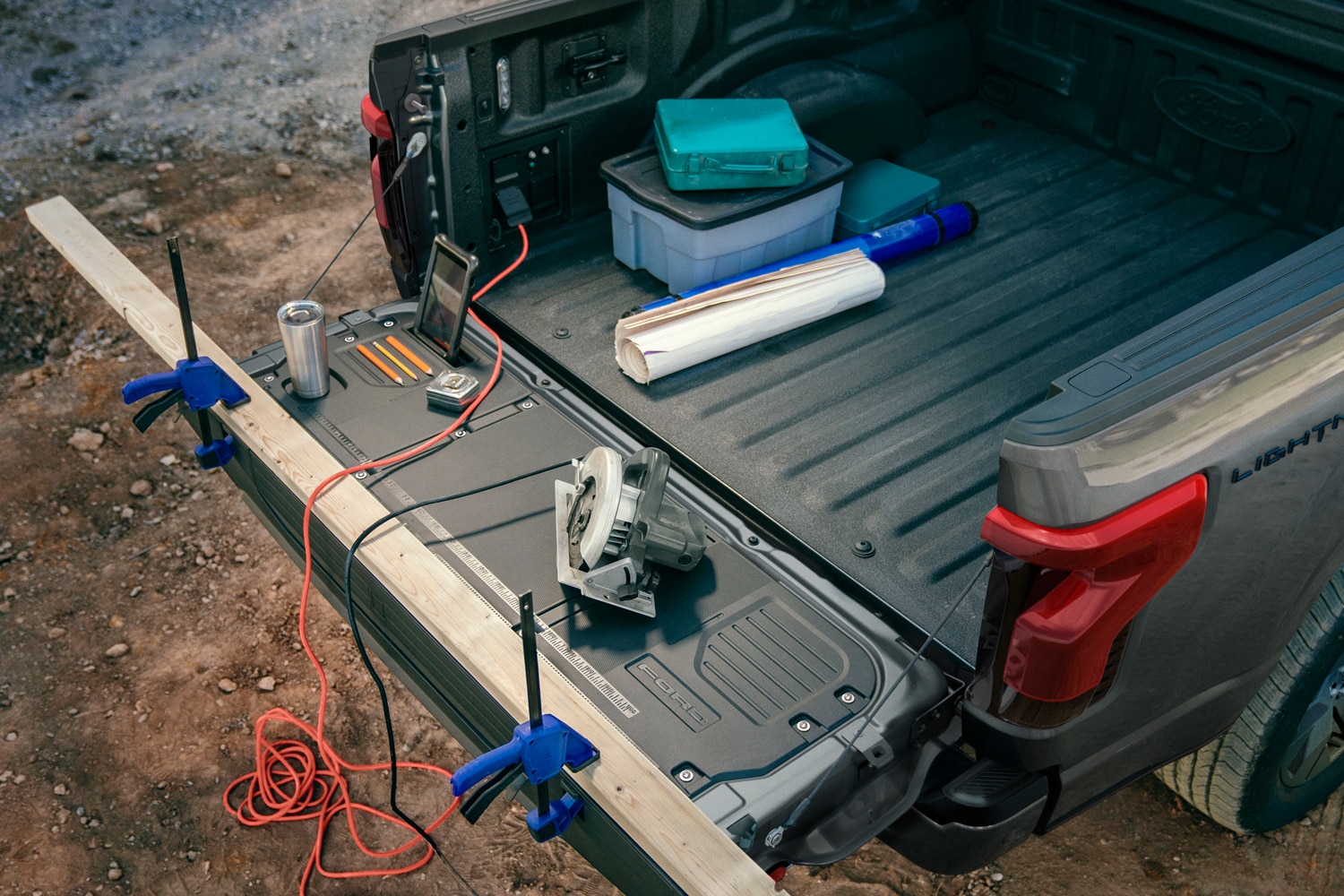 Ford
Ford
Pro Power Onboard
The F-150 Lightning's battery isn't just useful for spinning the truck’s wheels. Ford’s Pro Power Onboard system also serves as a built-in AC power source for getting the job done where an extension cord just can't reach. The system comes standard with 2.4-kW capability via four outlets in the truck’s front trunk. There are also two more outlets in the cabin and a pair in the rear bed.
Need more power? Ford claims the optional 9.6-kW system (standard on Lariat and Platinum trims, optional elsewhere) is capable of sawing through miles of plywood before the F-150 Lightning's battery is drained (not to mention keep the lights on at the campsite for hours and hours). You can also set the Pro Power Onboard system to preserve enough power to get you to the nearest charge location during such heavy usage.
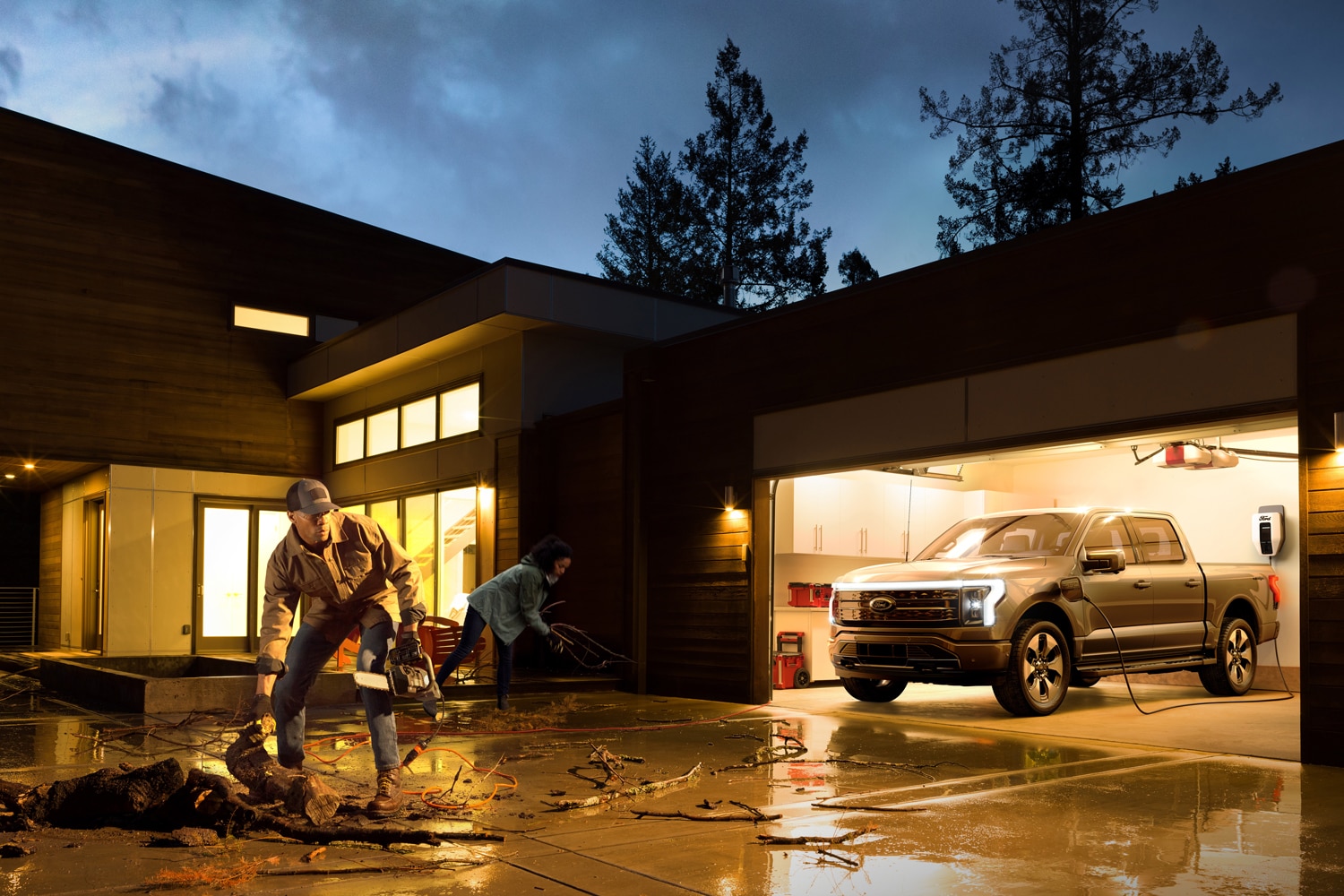 Ford
Ford
Intelligent Backup Power
The 9.6-kW Pro Power Onboard system can be harnessed at home, too. With the F-150 Lightning plugged into its 80-amp Ford Charge Station Pro system, the pickup's battery can automatically shoulder a whole-house electrical burden should the power go out. The system is managed entirely by the charging station and the truck, meaning it's a completely hands-off rescue from blackouts and brownouts, and there's no additional cabling to run from the pickup to the house.
Ford claims between three and 10 days of full-home power are available from a fully-charged F-150 Lightning, depending on how heavy your power demands are. For people who live in areas where electrical infrastructure is sensitive to wild weather or regularly strains under the needs of a growing populace, the truck’s Backup Power system is a bonus that no other vehicle can currently match.
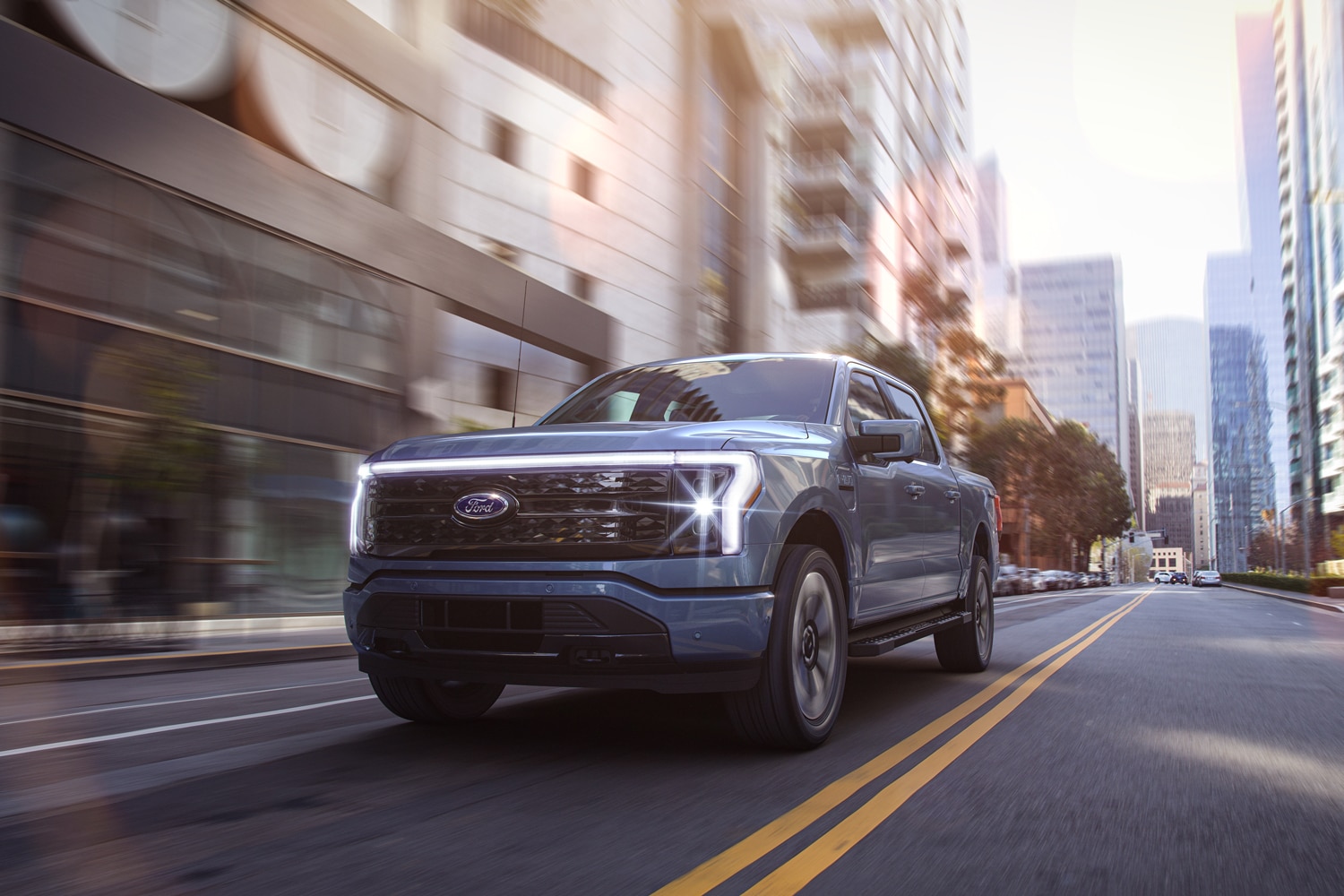 Ford
Ford
BlueCruise
Ford has spent considerable effort mapping 130,000 miles of highway in North America in order to introduce its BlueCruise hands-free driving system. Optional on the F-150 Lightning, BlueCruise uses the automaker's high-definition maps alongside its adaptive cruise control, lane centering, and speed limit sign recognition features to provide hands-free operation on designated roads.
Considered an SAE Level 2 automation system, BlueCruise drivers can leave their hands in their laps. The F-150 Lightning hauls itself down the road, steering, braking, and accelerating, all while keeping drivers alert as to any changes to its status by way of visual and text cues on the gauge cluster. This doesn't mean, however, that you can take a nap at the wheel. BlueCruise requires drivers to keep their eyes on what's happening around them in case an emergency requires them to take control of the vehicle.
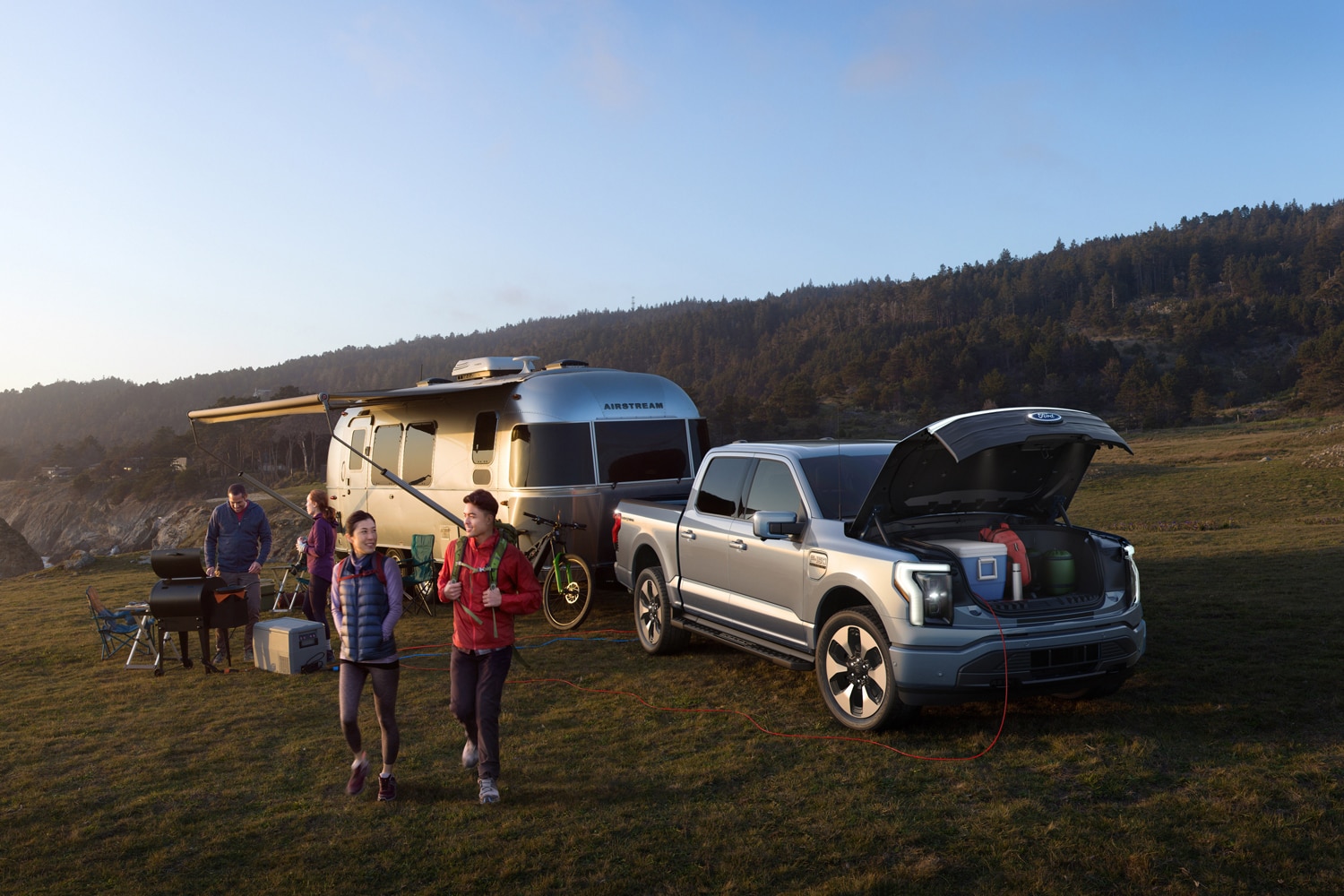 Ford
Ford
Mega Power Frunk
With internal combustion engines out of the picture, the F-150 Lightning can reclaim the space under its front hood where a traditional engine would have been. In its place is the electric truck’s Mega Power Frunk (a portmanteau of “front” and “trunk”) that offers just over 14 cubic feet of storage space and can carry up to 400 pounds of payload. That’s roughly equivalent to the trunk of an average mid-size sedan, and it comes with a power-opening feature and is lockable to keep valuables safe and out of sight.
As mentioned earlier, the Mega Power Frunk also houses four 110-volt electrical outlets on top of a pair of USB charging outlets, making it a protected space for charging devices or powering a tailgate—or is that frunk-gate?
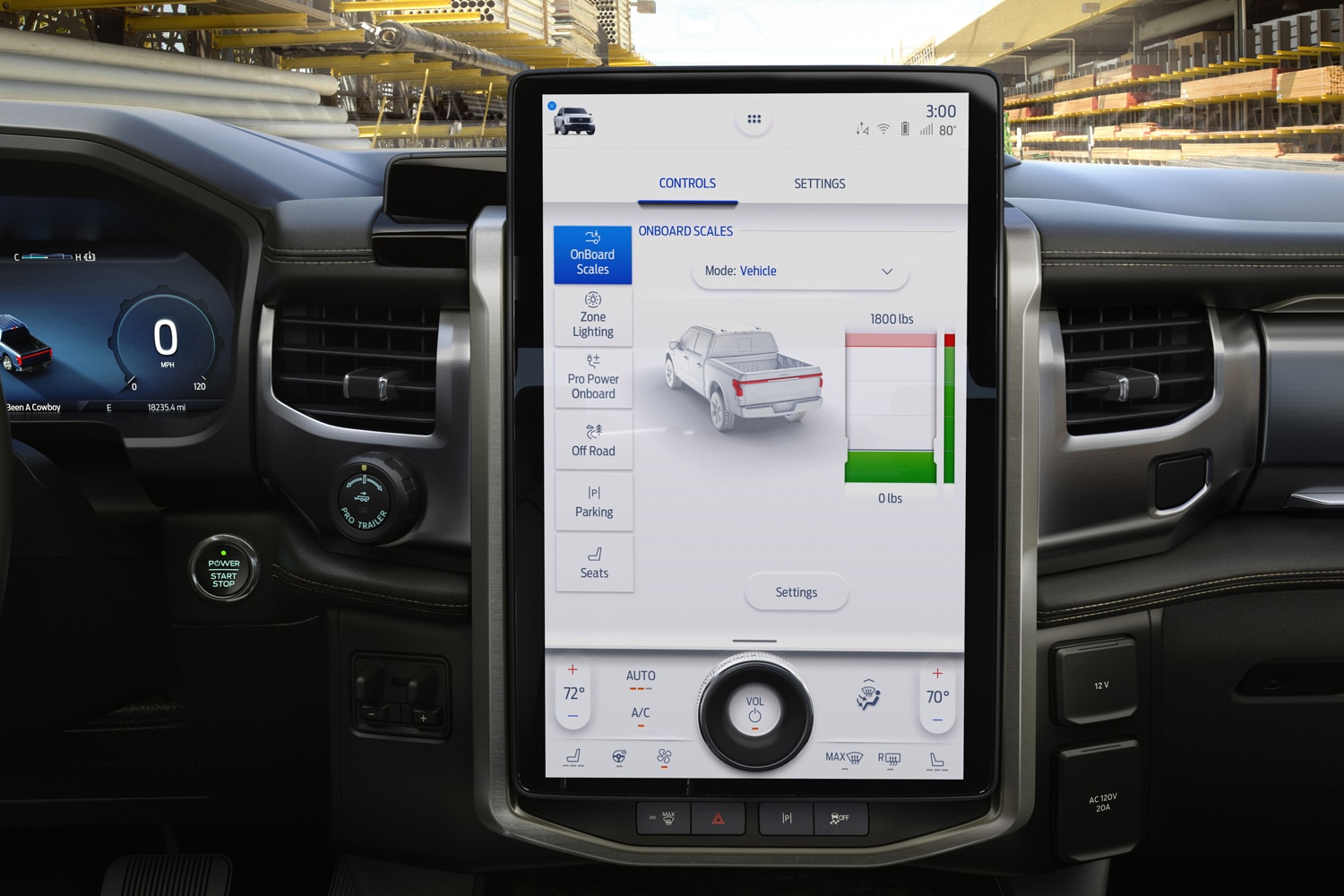 Ford
Ford
Onboard Scales
The F-150 Lightning provides a maximum of 2,000 lbs of cargo capacity in its rear cargo bed when equipped with its standard-range battery (with the extra weight of the extended-range battery slicing 10 percent from that figure). How can you be sure that you're within the limits of what the truck can carry, once passengers are on board?
The Lightning’s optional Onboard Scales feature, accessible via the truck’s dash-mounted infotainment system, makes it easy. This feature detects how much weight is in the cargo bed, and considers the remaining battery charge to estimate the driving range while hauling the additional mass.
Written by humans.
Edited by humans.
 Benjamin Hunting
Benjamin HuntingBenjamin Hunting is a writer and podcast host who contributes to a number of newspapers, automotive magazines, and online publications. More than a decade into his career, he enjoys keeping the shiny side up during track days and always has one too many classic vehicle projects partially disassembled in his garage at any given time. Remember, if it's not leaking, it's probably empty.
Related articles
View more related articles